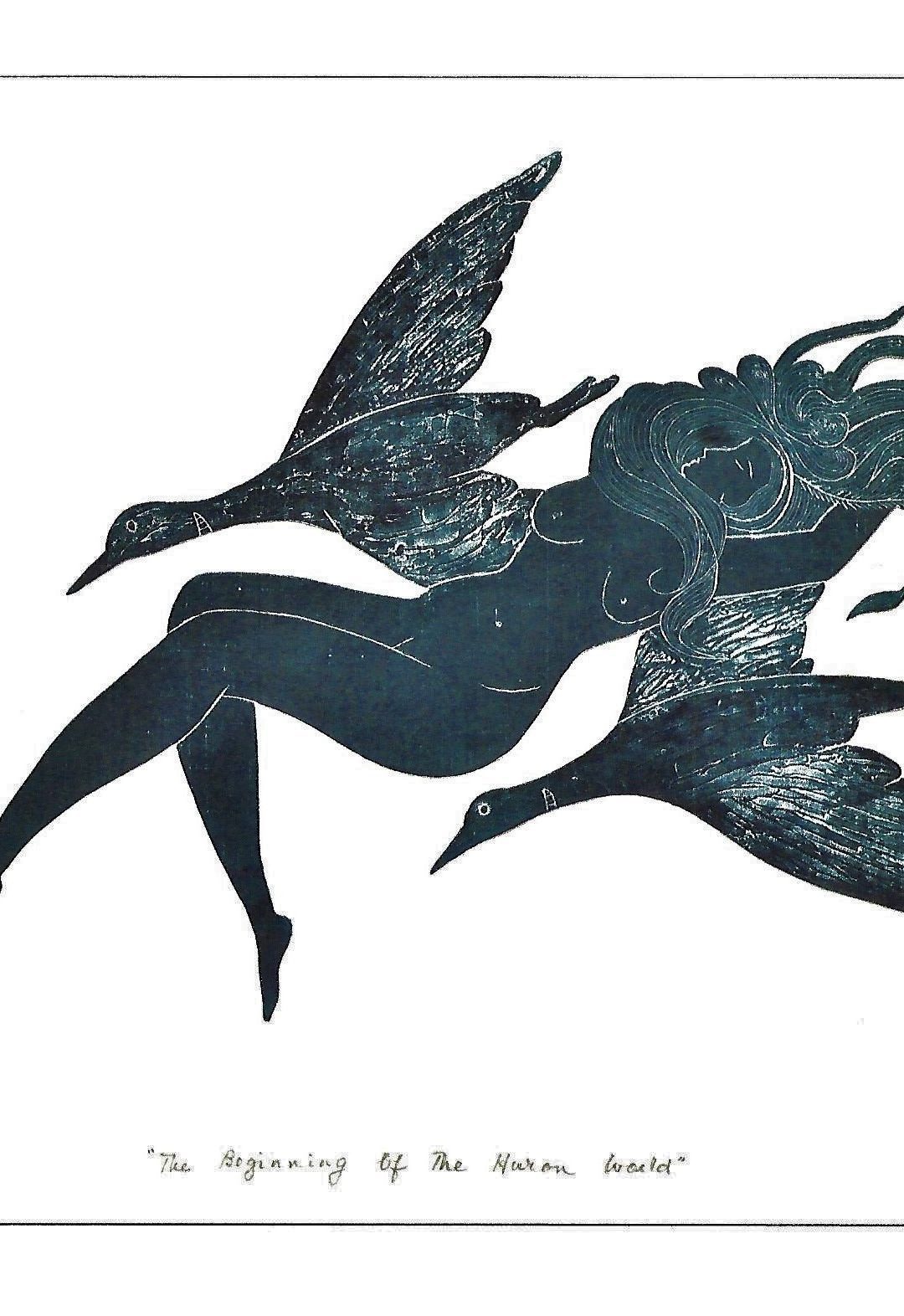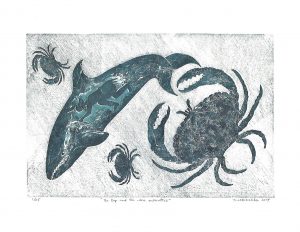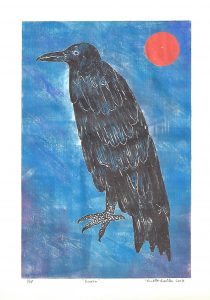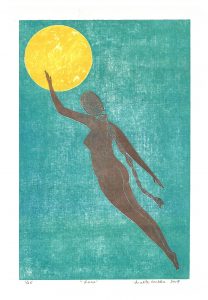“More Beautiful and Amazing” Seton Gallery exhibition 2019-2020
I visited Mukta’s Taos studio to choose these prints for the Academy for the Love of Learning “More Beautiful and Amazing” exhibition. Her words follow below, followed by the Seton comments. In this exhibition, I paired contemporary artwork with Seton writing. Although the art and the writing come from different times, I feel a cross-generational affinity between them.
Mukta M. Webber Statement About Her Prints
I am a scientist and a cell biologist by training. I am now a Professor Emerita of Integrative Biology at Michigan State University.
I have always had a special interest in art and nature. Even as a young girl, I was interested in drawing and painting. Then followed my scientific career where I specialized in cancer research.
During 1978 -1979, I took time off and worked as an apprentice with two well-known Canadian artists Saul Field and Jean Townsend, in Toronto, Canada. Both were printmakers. In 1963, they developed a non-toxic, acid-free method of printmaking, which they called “Compotina”. The prints made with this process are called “Embossed Engravings”. Saul Field was an artist, a writer, and a film-maker. Field’s books include, The Magic Fiddler, Tree of Dreams, and Loup-Garou.
After retiring, I moved to Taos, New Mexico, where I have a studio; I now use many different printmaking methods including intaglio and mezzotint.
Ernest Thompson Statement Paired with the Four Prints
Beginnings of the Huron World
The Wild Geese turned up their eyes and answered back. Their mother led the way and they whispered all along the line. Their mother gave the word, swimming fast and faster, then quacked, then called, and then their voices rose to give the “honk”; the broad wings spread a little, while they spattered on the glassy lake, then rose to a measured “Honk, honk”; soaring away in a flock, they drifted into line, to join those other honkers in the Southern sky. (Wild Animal Ways, pg. 214, 1922) [Featured image above. Click on images below to enlarge.]
Boy and the Sea Monsters
I sat on a low cliff above the booming surf to-day. The tide was coming in. The broad reef, shaggy with seaweed of richest hues, was part of the glory of the incoming tide—roaring, heaving, irresistible, and beautiful as it was a million years ago. And I found comfort in the thought that, though the West be defiled and despoiled of its wild life and its beauty, this at least will go on and on, unchanged, unconscious, and forever untouched by the spoliating hand of man. (Lives of Game Animals, Vol. III, preface, 1927)
Raven (stand in for Silverspot)
Once in a while there arises an animal who is stronger or wiser than his fellow, who becomes a great leader, who is, as we would say, a genius, and if he is bigger or has some mark by which men can know him, he soon becomes famous in his country, and shows us that the life of a wild animal may be far more interesting and exciting than that of many human beings. (Wild Animals I Have Known, pg. 59, 1898)
Luna
What walked around your tent that night? You know not, you heard nothing, for you slept. Yet when the morning comes you feel and know that round your couch, with wings and hands upraised in blessed soothing influence. There passed the Angel of the Night, with healing under her wings, and peace. (Woodland Tales, pg. 173, 1926)
(Beginnings of the Huron World, Boy and the Sea Monsters, Raven, Luna, copyright, Mukta M. Webber. Used by permission.)




